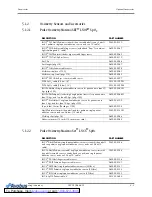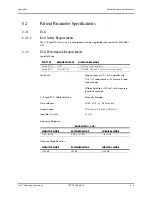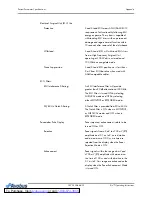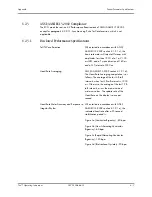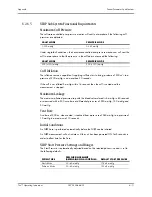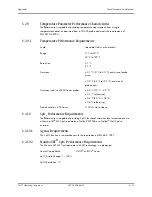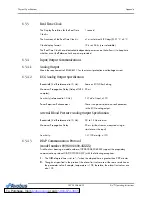
Patient Parameter Specifications
Appendix
6 - 8
0070-10-0666-01
Trio™ Operating Instructions
6.2.4
ECG Systole Detector and Heart Rate Meter
The ECG heart rate meter function is derived from the ECG waveform. It provides a “count”
of the number of “R” waves per minute that are detected in the ECG waveform.
6.2.4.1
ECG Derived Heart Rate Meter Performance Requirements
Range:
Step Change Response Time:
When tested in accordance with ANSI/
AAMI EC13-2002 section 4.1.2.1f), the
response time of the heart rate meter to
changes in heart rate is:
Less then 7 sec for step increase from 80 to
120 bpm
Less then 8 sec for step decrease from 80 to
40 bpm
Time to Alarm for Tachycardia:
When tested in accordance with ANSI/
AAMI EC13-2002 section 4.1.2.1g), the
time to alarm is:
For Figure 4a - < 8 seconds
For Figure 4b - < 8 seconds
Pacer Rejection:
When tested in accordance with ANSI/
AAMI EC13-2002 section 4.1.4.1, the heart
rate meter will reject all pulses of amplitude
±2 mV to ± 700 mV and duration 0.1 ms to
2 ms with no tail.
When tested in accordance with ANSI/
AAMI EC13-2002 section 4.1.4.2, the heart
rate meter will reject all pulses of amplitude
± 2 mV to ± 700 mV and duration 0.1 ms to
2 ms with 100 ms time constant tail of less
than 2.0 mV, or 4 ms time constant tail of
less than 2.0 mV.
When tested in accordance with ANSI/
AAMI EC13-2002 section 4.1.4.3, the
minimum input slew rate that will cause
approximately 50% of Figure 5d's pulses to
trigger the Trio's pacer pulse detector is 10
V/s RTI.
ECG SOURCE
PEDIATRIC RANGE (bpm)
ADULT RANGE (bpm)
3/5 Lead ECG
15 to 350
15 to 300




